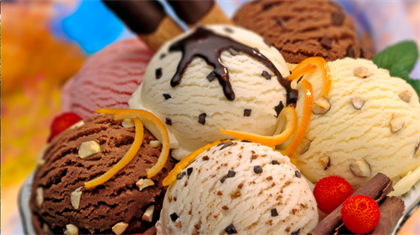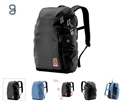
The Australian Makeup Market: A Dynamic Sector Poised for Continued Growth
January 15, 2025
The Australian makeup market has seen impressive growth in recent years, with a significant surge in consumer demand for beauty and cosmetic products. In 2023, the market was valued at AUD 441.17 million, and it is projected to grow at a compound annual growth rate (CAGR) of 5.64% from 2024 to 2032. By 2032, the market is expected to reach AUD 722.87 million, driven by shifting consumer preferences, increasing disposable incomes, and the growing influence of digital and social media trends. The makeup sector in Australia, which encompasses skincare, cosmetics, and beauty products, has become a central aspect of the country’s broader beauty and personal care industry.
Key Factors Driving the Growth of the Australian Makeup Market
Several factors are contributing to the robust growth of the Australian makeup market. From evolving beauty standards to the influence of social media, here’s a closer look at the key drivers shaping this sector:
1. Rising Disposable Income and Affluence
With an increase in disposable income among Australian consumers, the makeup market has benefitted significantly. As individuals have more purchasing power, they are willing to spend on premium beauty products that provide better quality, results, and overall experience. Australians, particularly Millennials and Gen Z consumers, have shifted their focus toward high-quality and branded beauty products, which has created a surge in demand for makeup.
2. Growing Focus on Personal Grooming and Beauty Consciousness
There has been a noticeable shift in the beauty habits of Australian consumers, with an increasing emphasis on personal grooming. Makeup is no longer seen as a luxury or occasional purchase but as a part of everyday routines. Consumers are investing in makeup products to enhance their appearance and boost self-confidence, making beauty products an integral part of their daily life. This trend is particularly prominent among young Australians who are highly engaged with the beauty industry through platforms like Instagram and TikTok.
3. Influence of Social Media and Beauty Influencers
Social media has played a pivotal role in the evolution of the makeup market. Platforms like Instagram, YouTube, and TikTok have become essential spaces for makeup brands to showcase their products and reach a broad audience. Beauty influencers and makeup artists continue to have a massive impact on product trends, driving Australian consumers to purchase products that are featured in viral beauty tutorials, product reviews, and makeup challenges.
Brands often collaborate with influencers and celebrities to launch new makeup lines, which can lead to a significant spike in demand. The rise of beauty bloggers and influencers promoting makeup products has transformed the beauty industry, especially among younger demographics in Australia.
4. Increased Popularity of Organic and Clean Beauty Products
As consumers become more health-conscious and environmentally aware, there is an increasing demand for natural, organic, and cruelty-free makeup products. Australian consumers are seeking makeup products that are free from harmful chemicals and made from sustainably sourced ingredients. This shift toward "clean beauty" has become a key trend, with brands focusing on developing non-toxic and eco-friendly products to meet consumer expectations. Australian beauty brands, as well as international labels, are capitalizing on this trend to attract health-conscious customers.
5. The Rise of E-Commerce and Online Shopping
The rise of e-commerce has significantly transformed the makeup market in Australia. Consumers now have access to a wide range of beauty products available online, making it more convenient to shop for makeup from the comfort of their homes. E-commerce platforms like Amazon, Mecca, and Sephora are leading the way in providing makeup products to Australian consumers. Online shopping also enables customers to easily compare prices, read reviews, and access exclusive product launches and promotions.
The COVID-19 pandemic accelerated the shift toward digital channels, and many makeup brands have enhanced their online presence by offering virtual try-on tools and personalized recommendations. This trend is expected to continue, driving further growth in the Australian makeup market.
Makeup Market Segmentation in Australia
The Australian makeup market is segmented into various categories, each with its own consumer base and growth trajectory. Here’s an overview of some key segments:
1. Face Makeup
Face makeup, which includes foundation, concealer, highlighter, and blush, is one of the largest segments in the Australian makeup market. Consumers are increasingly seeking products that offer long-lasting coverage, hydration, and skin-perfecting benefits. The demand for multifunctional makeup products that can address both beauty and skincare needs, such as tinted moisturizers and BB creams, has grown.
2. Eye Makeup
Eye makeup products, such as eyeshadows, mascaras, eyeliners, and brow products, also have a strong market presence in Australia. Eye makeup is often a focal point for beauty enthusiasts, and new innovations in the form of smudge-proof, waterproof, and long-lasting formulas have increased consumer interest. The eye makeup segment is highly influenced by current trends, including bold eyeshadow colors, graphic eyeliner styles, and voluminous lashes.
3. Lip Makeup
Lip products, including lipsticks, lip glosses, lip liners, and lip balms, are staples in the makeup routines of many Australian consumers. Matte lipsticks, in particular, have seen significant growth in popularity, with consumers opting for bold, long-lasting shades. The rise of lip plumpers and nourishing lip care products has also contributed to the growth of this category.
4. Nail Care and Nail Polish
While not as prominent as face or eye makeup, the demand for nail care and nail polish products has also grown significantly. Nail art and manicures are a form of self-expression, and Australians are embracing various nail polish trends. The growth of gel polish and at-home nail care kits has been a significant trend in this category.
5. Men's Grooming and Makeup
The concept of makeup for men has gained traction in Australia in recent years. As societal attitudes toward makeup evolve, more men are using makeup products to enhance their appearance or express themselves. The demand for men's grooming products, such as concealers, foundation, and brow grooming products, is rising, signaling an expansion of the market to include male consumers.
Challenges and Opportunities in the Australian Makeup Market
While the Australian makeup market presents numerous growth opportunities, it also faces certain challenges:
1. Competition and Market Saturation
With numerous local and international brands vying for attention, the Australian makeup market is highly competitive. New brands continue to enter the market, offering unique products, often at lower price points. Established makeup companies are also introducing new product lines to maintain their market share, which increases the level of competition.
2. Changing Consumer Preferences
Consumer preferences are continually shifting, particularly as new beauty trends emerge. For instance, there has been a surge in demand for makeup products that cater to various skin tones, textures, and types. Brands that can stay ahead of these changing trends will be better positioned to meet the evolving needs of Australian consumers.
3. Regulations and Safety Concerns
Makeup products are subject to various regulations and safety standards. Brands must ensure that their products are safe for use and comply with Australia’s strict cosmetic regulations. The increasing focus on clean, natural beauty products has also led to a demand for transparency in ingredient sourcing and product formulations.
4. Sustainability
Sustainability is becoming a key factor in the purchasing decisions of Australian consumers. Consumers are increasingly concerned about the environmental impact of packaging, product sourcing, and disposal. Brands that adopt eco-friendly practices, such as using recyclable packaging and sustainable ingredients, will appeal to environmentally conscious customers.












